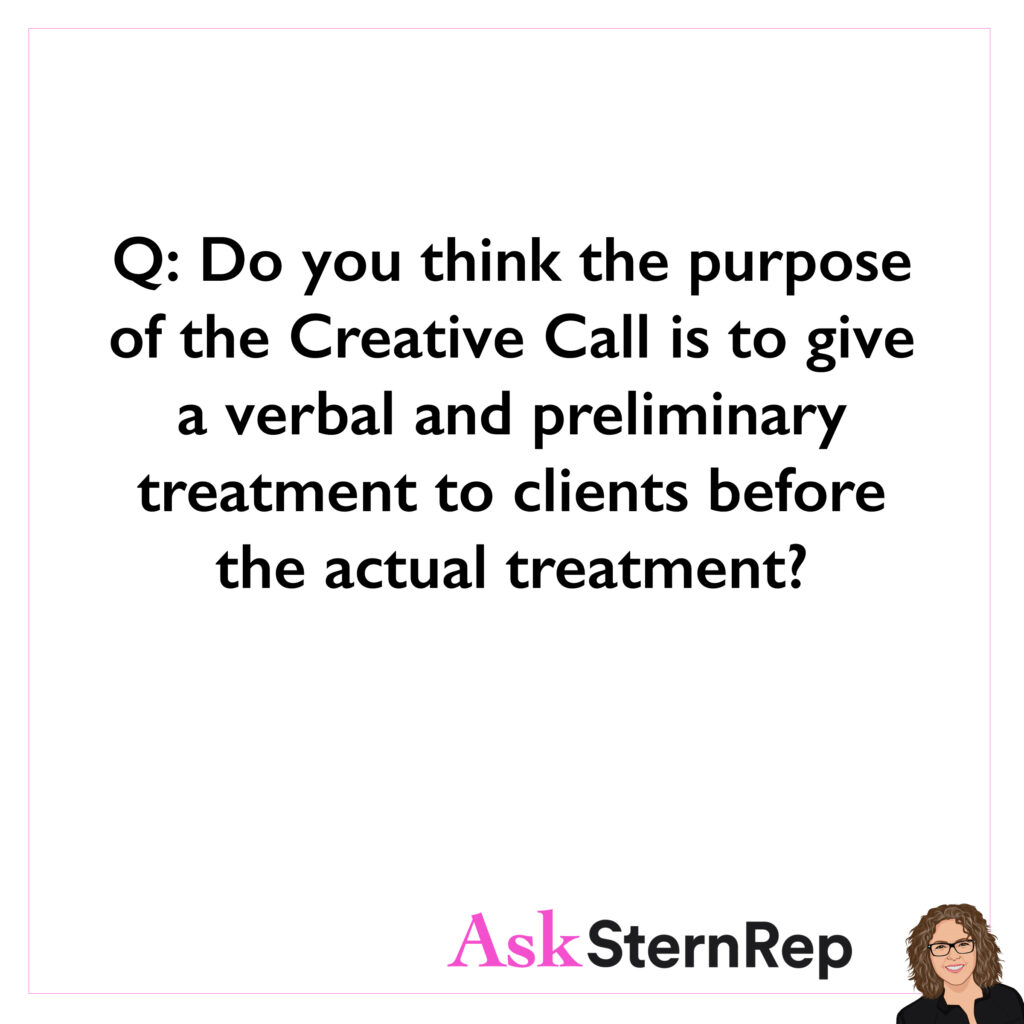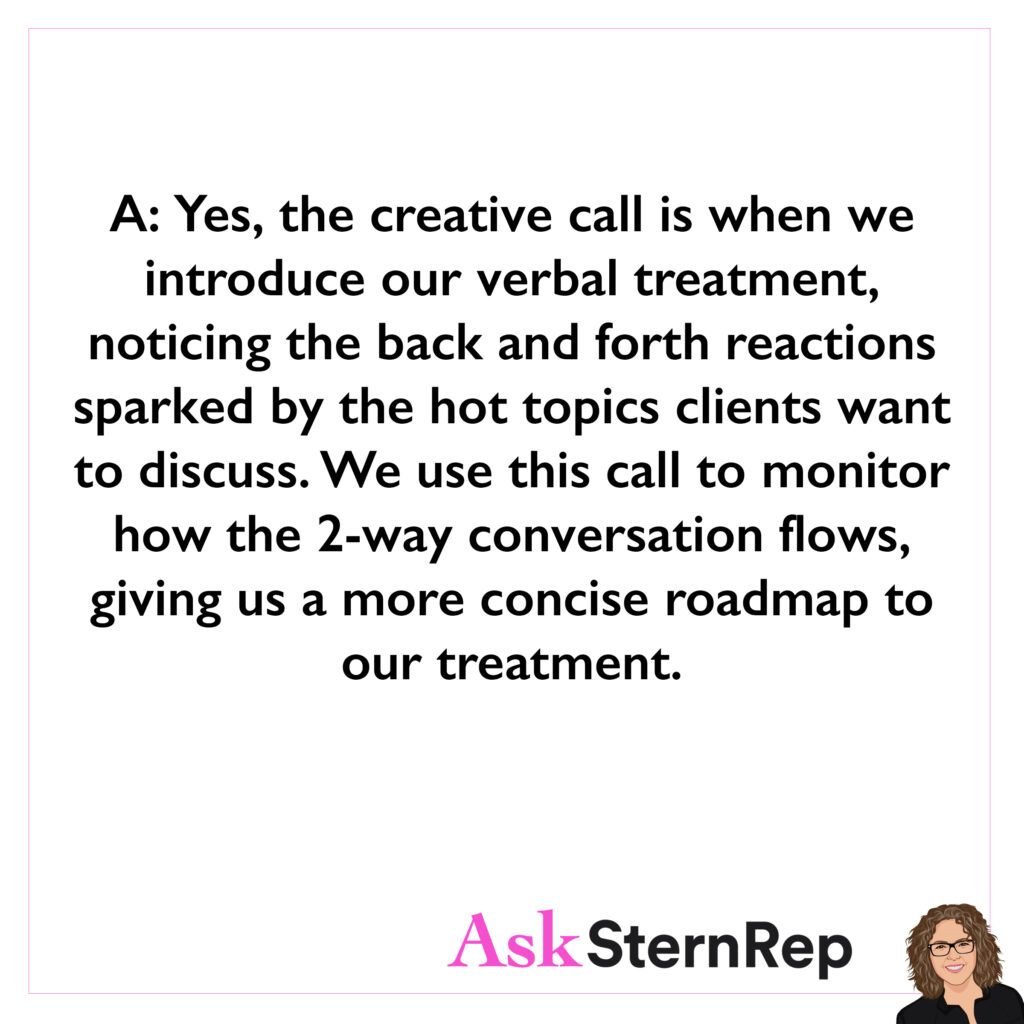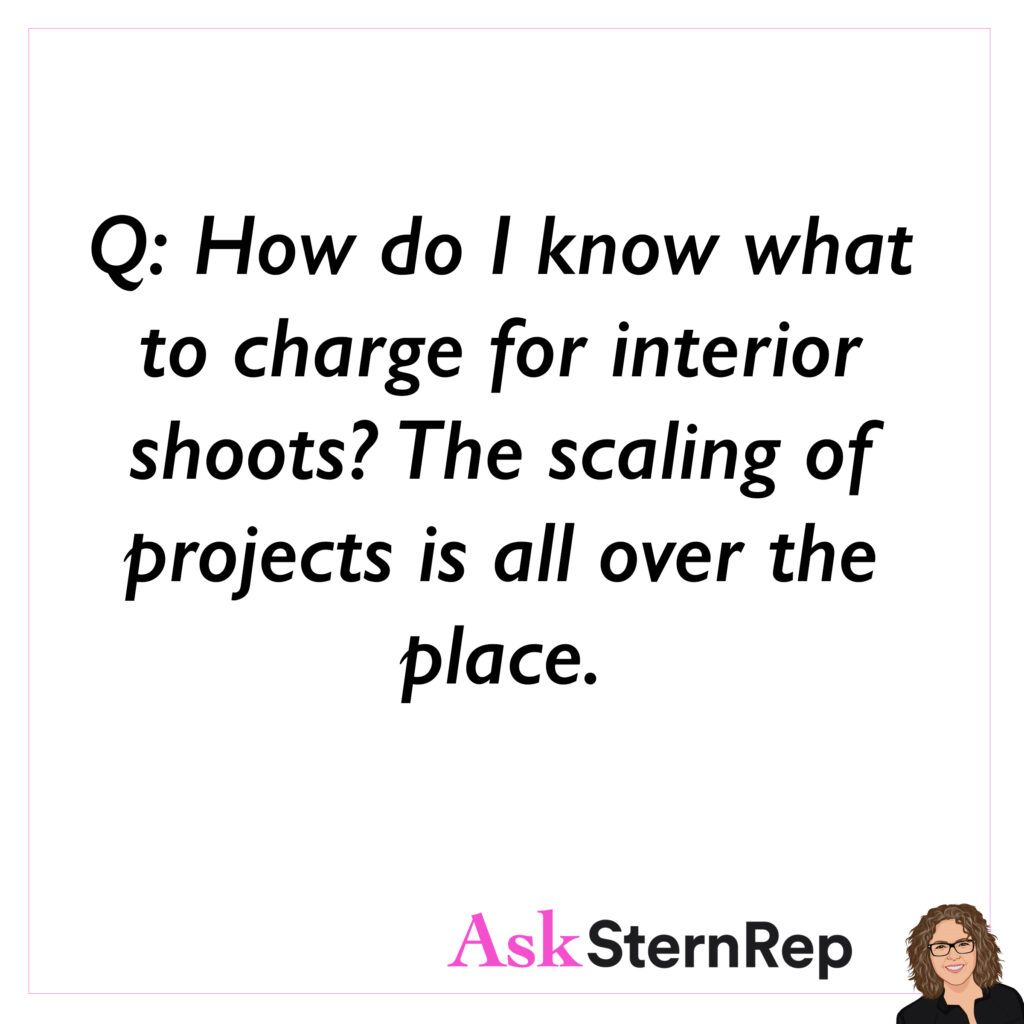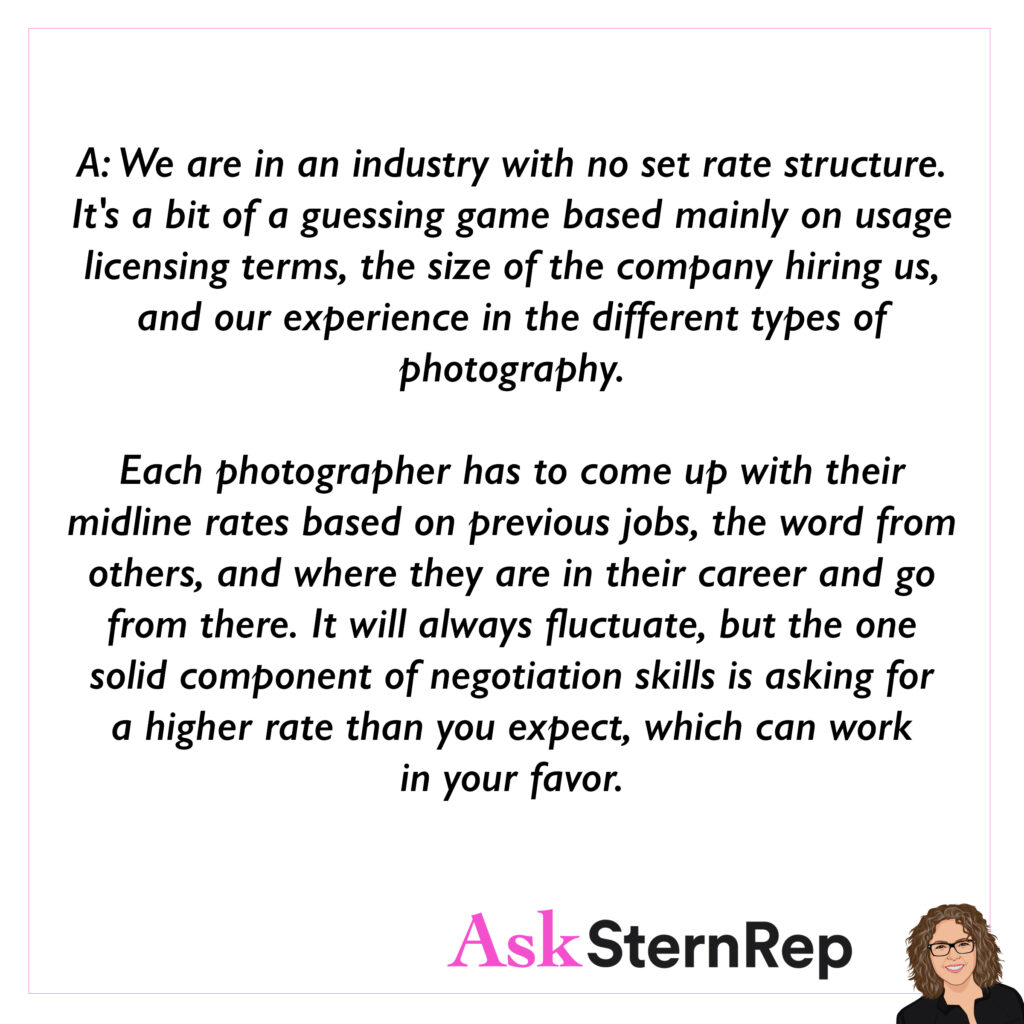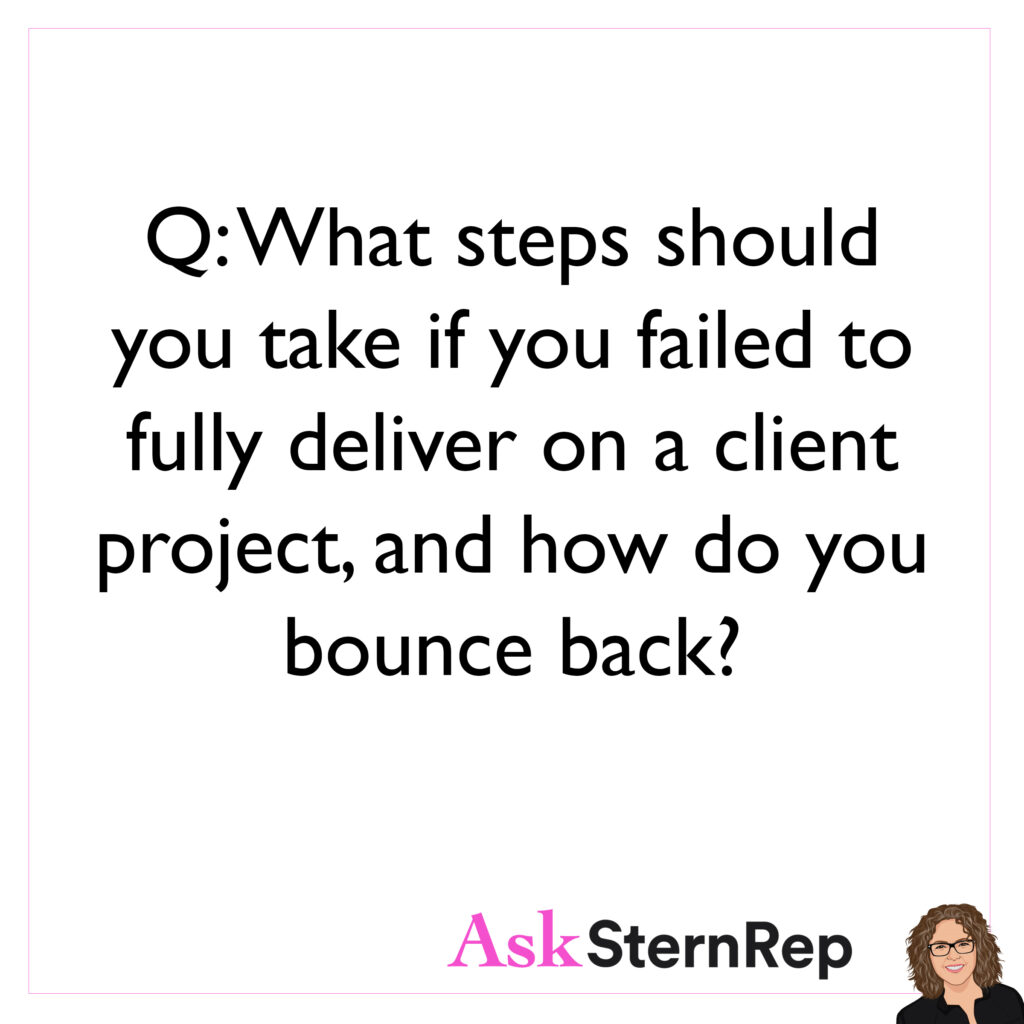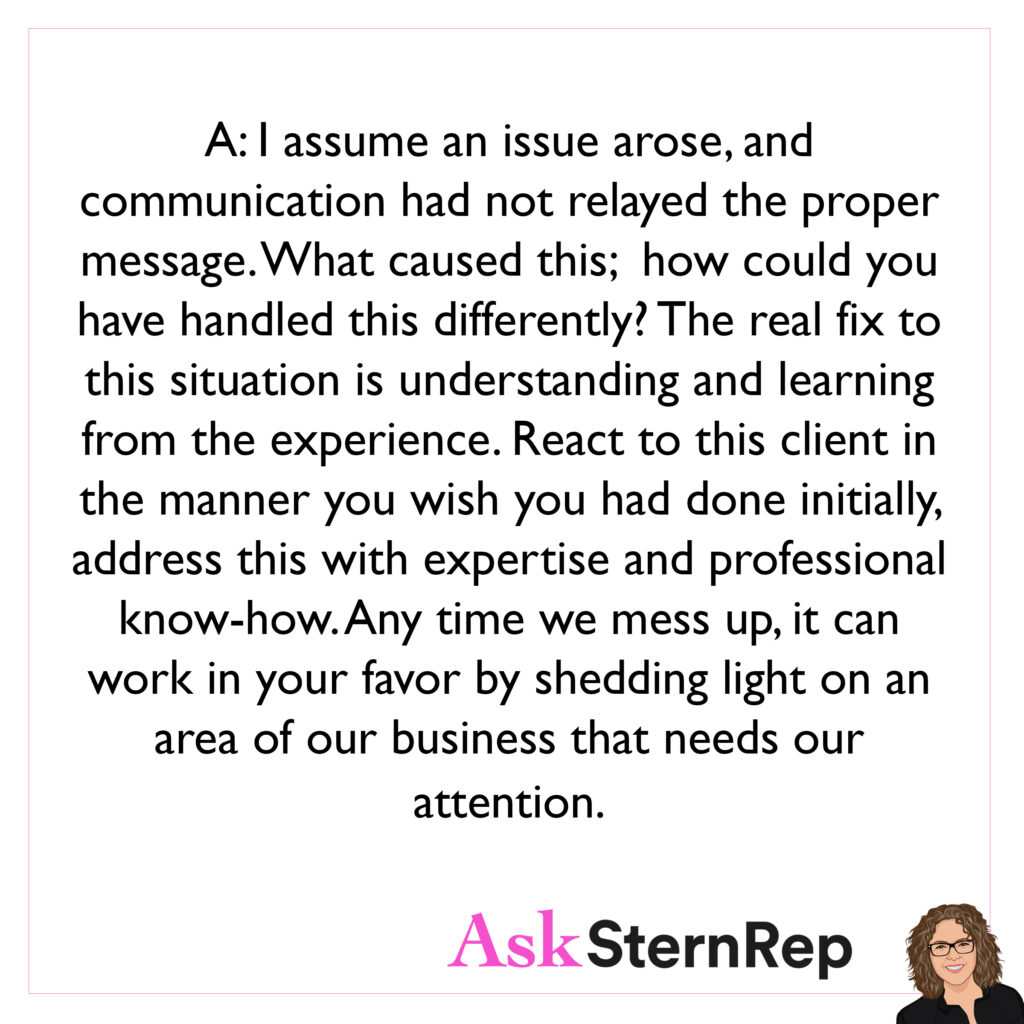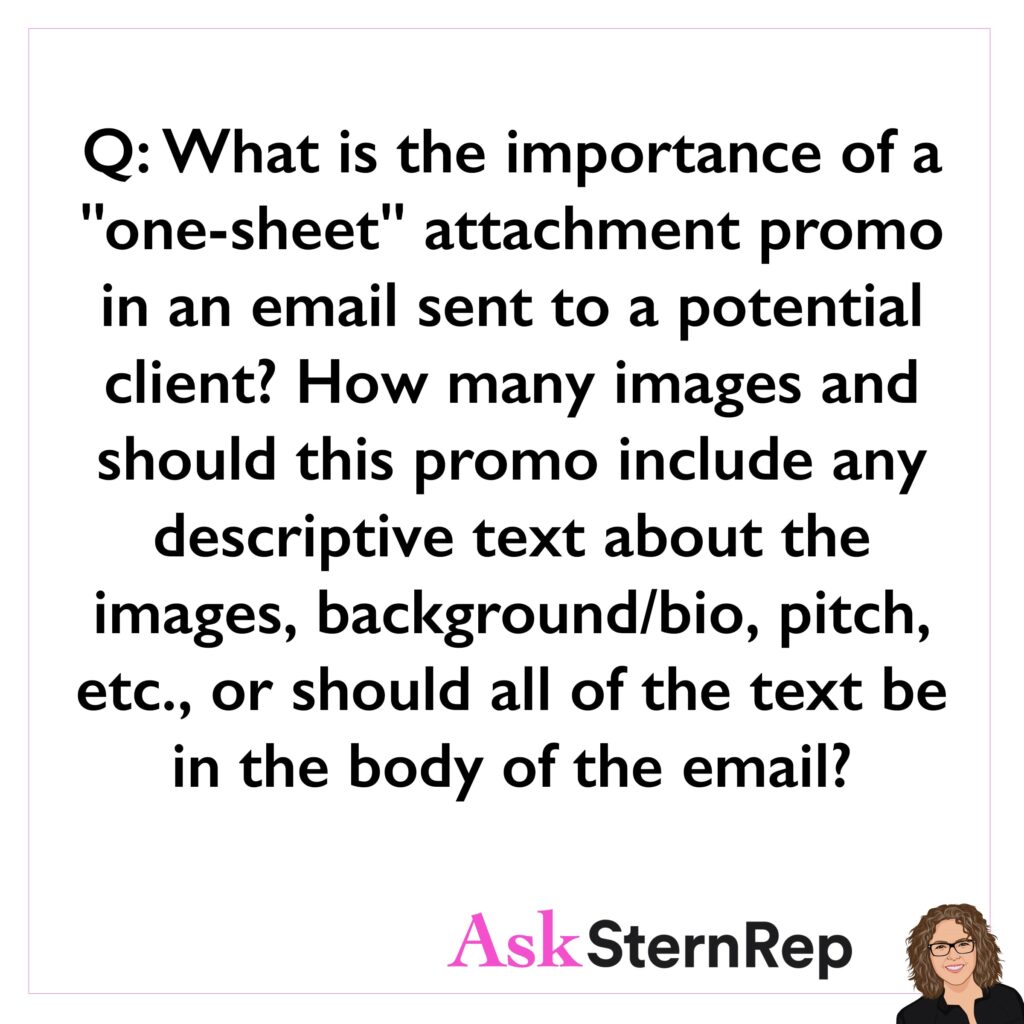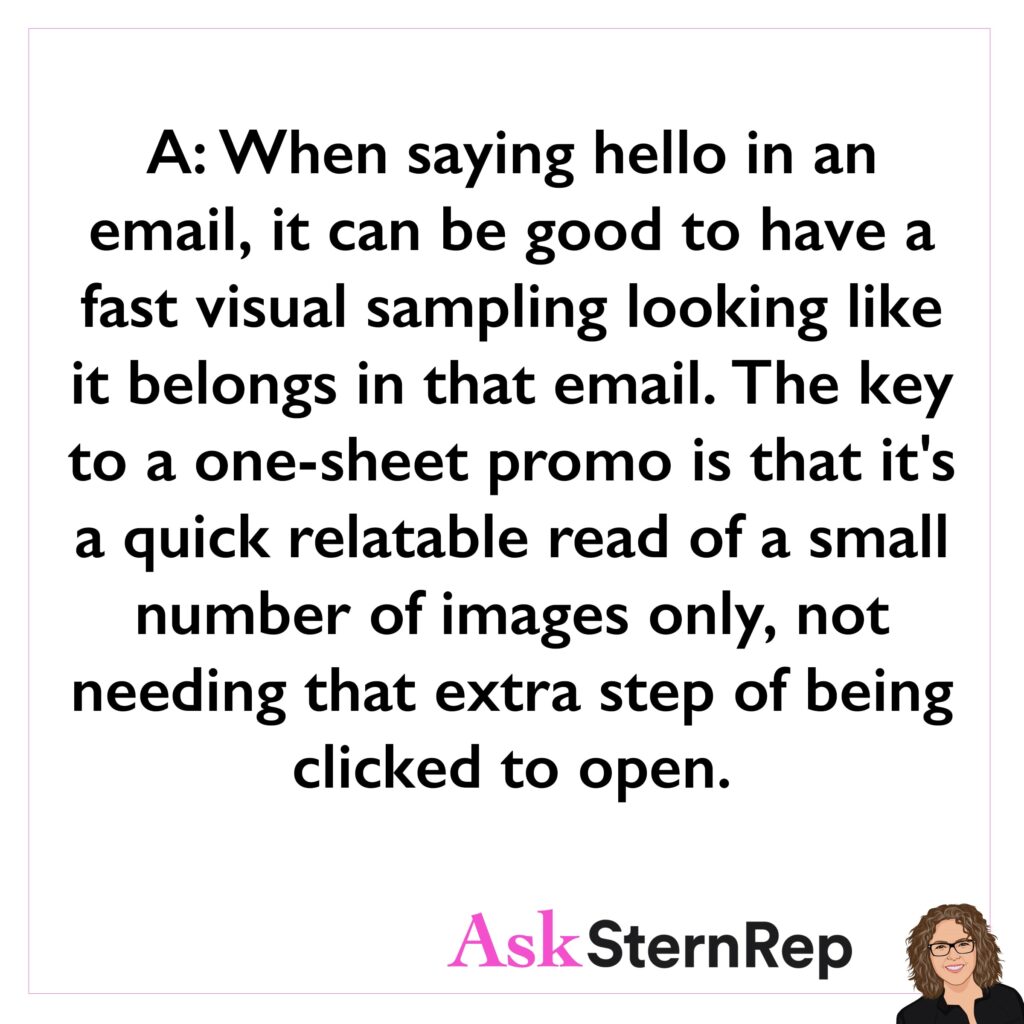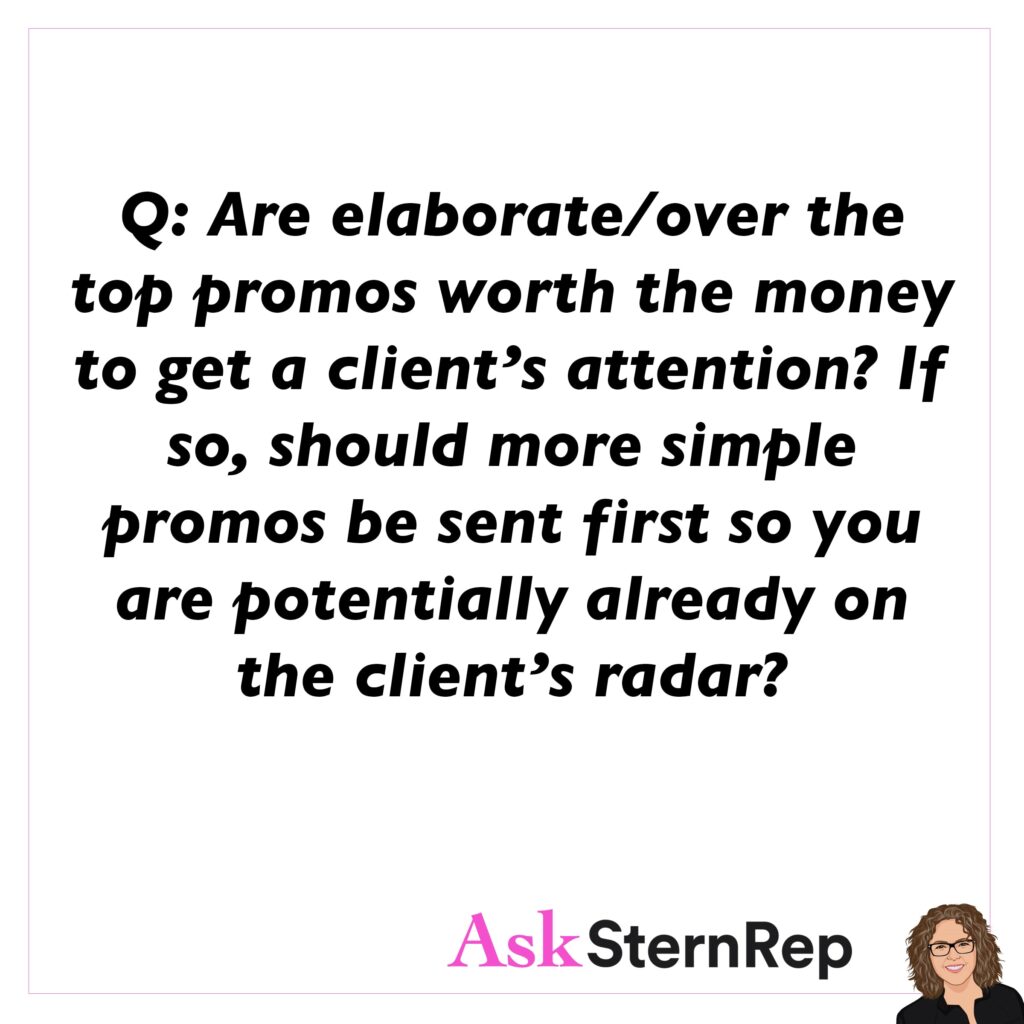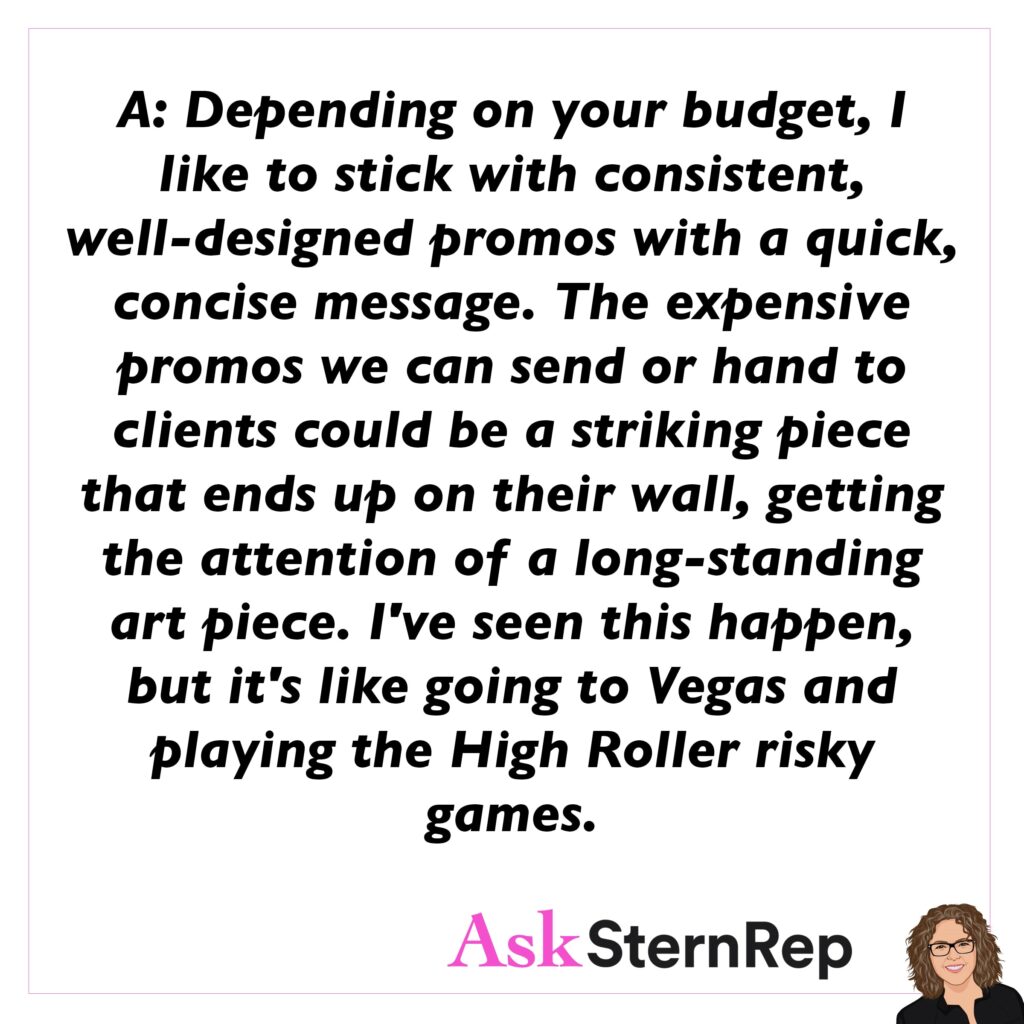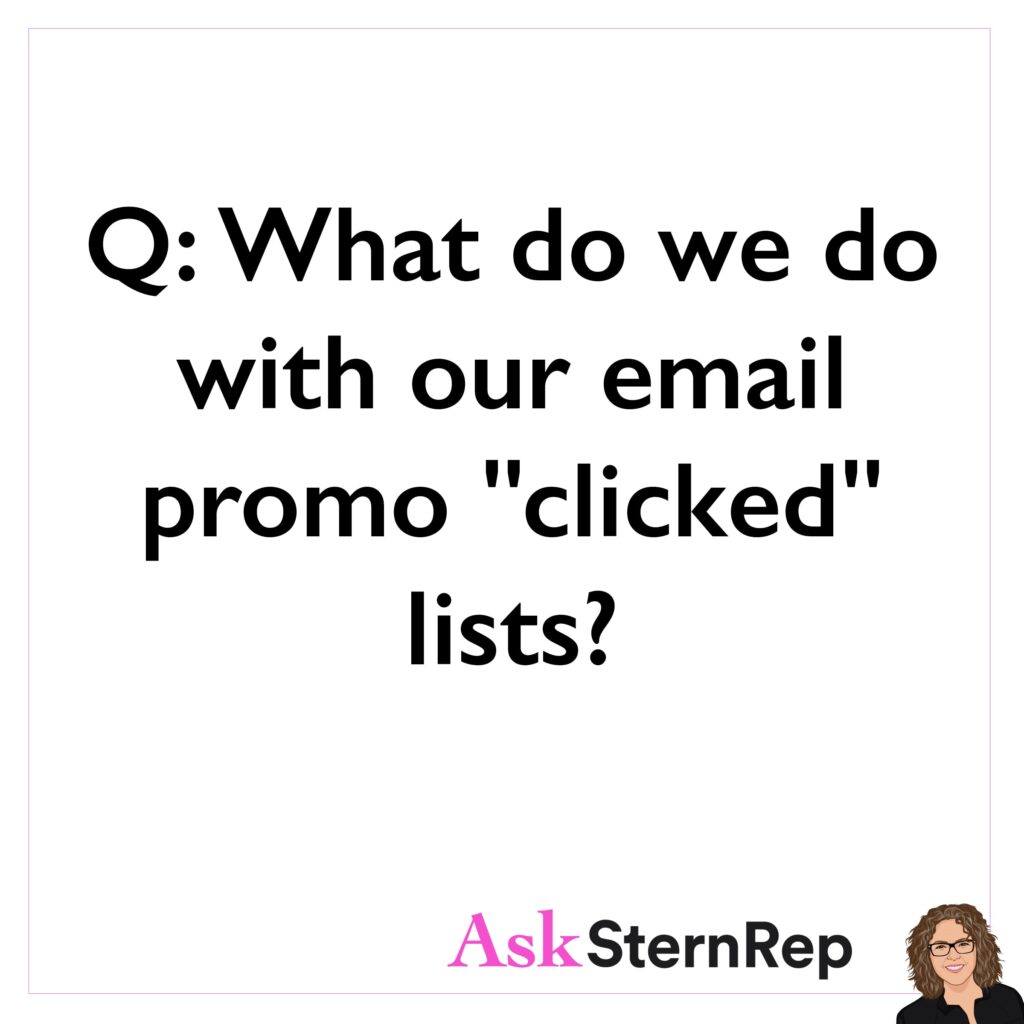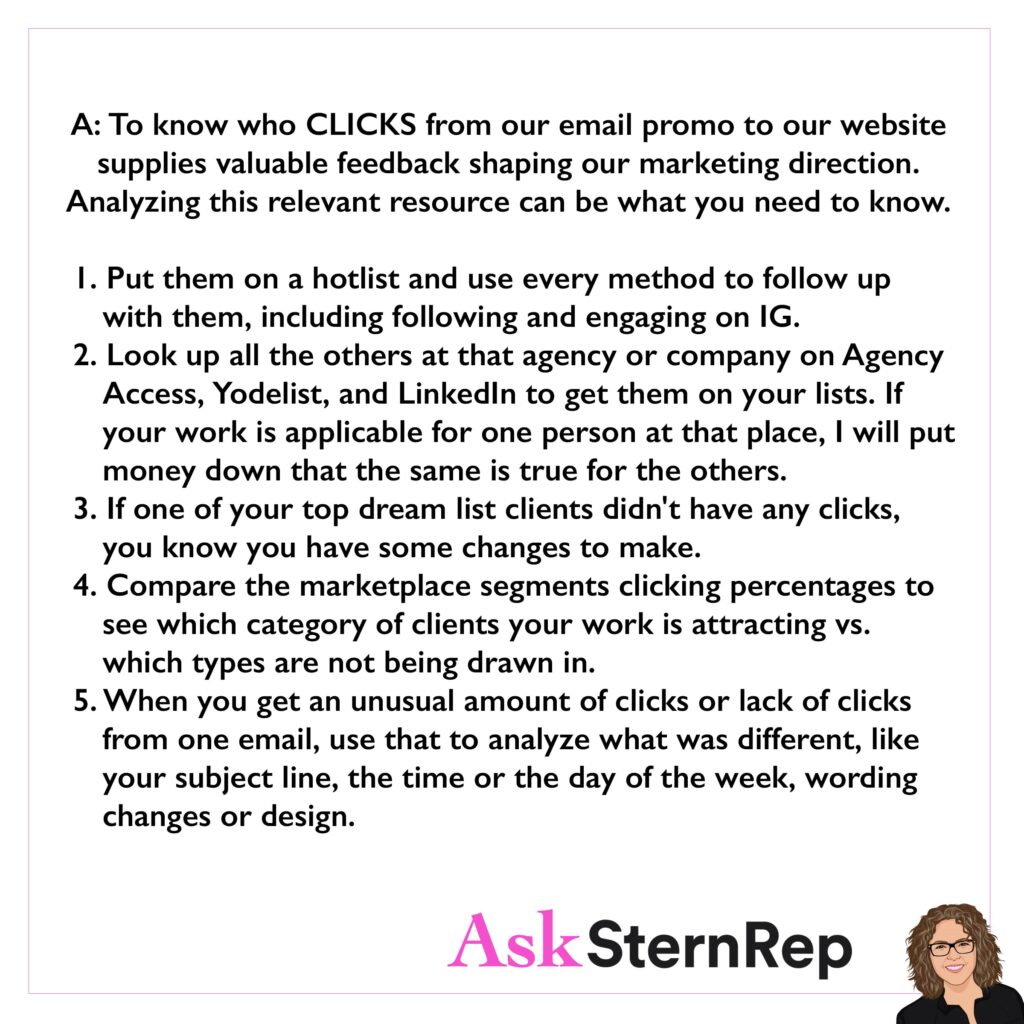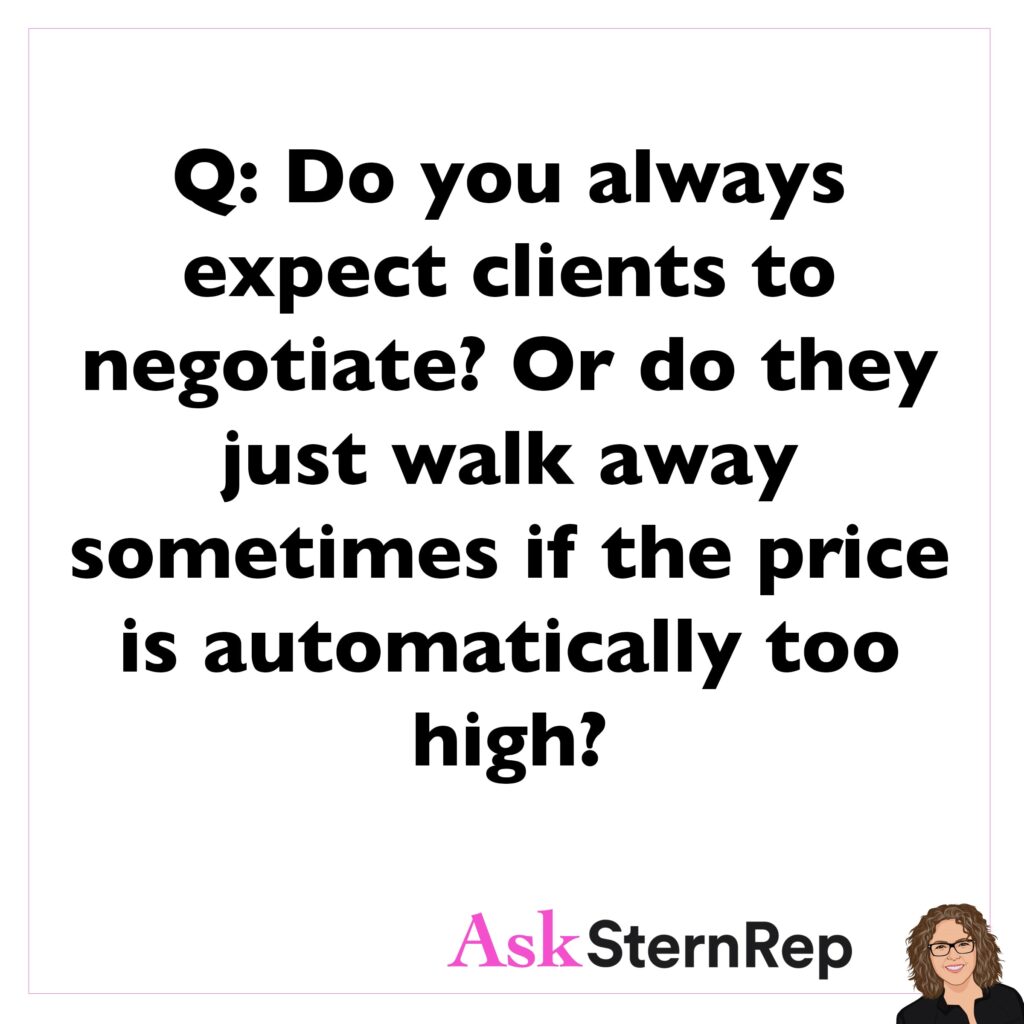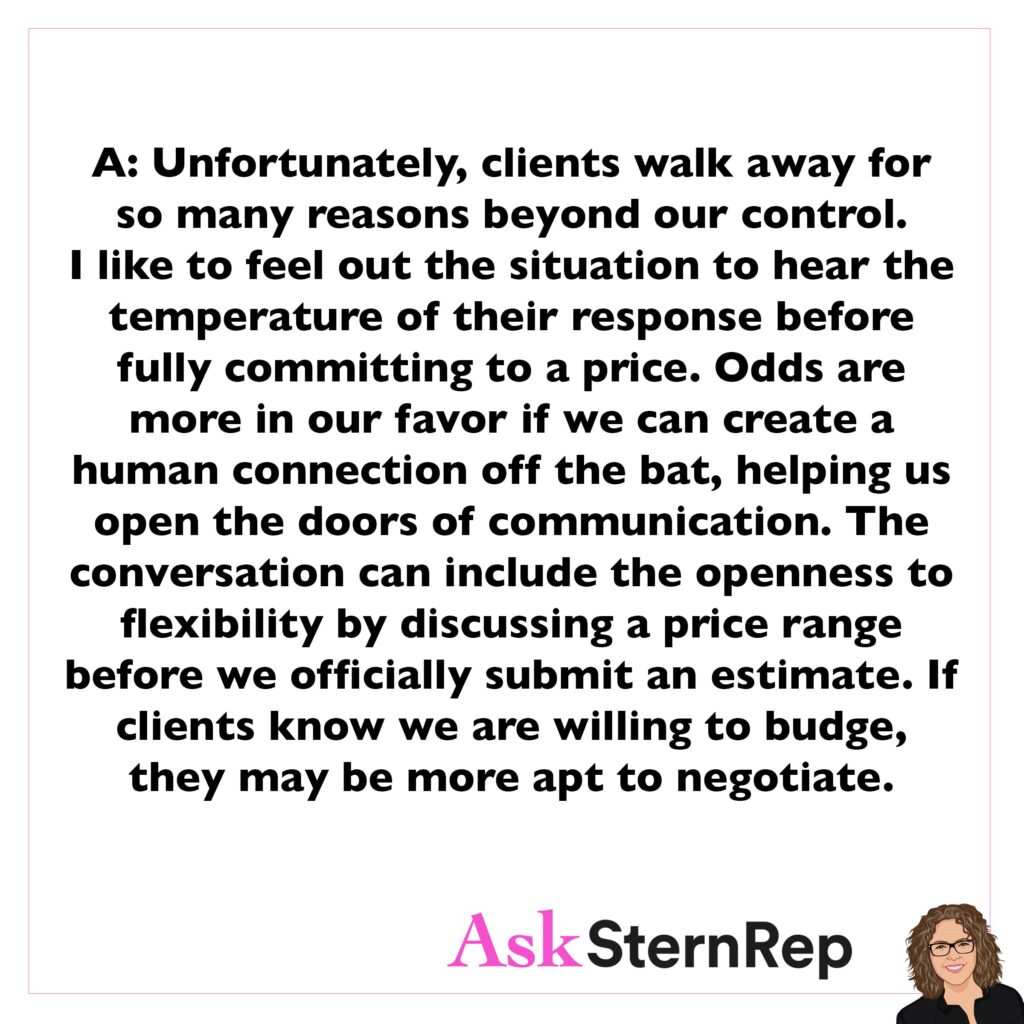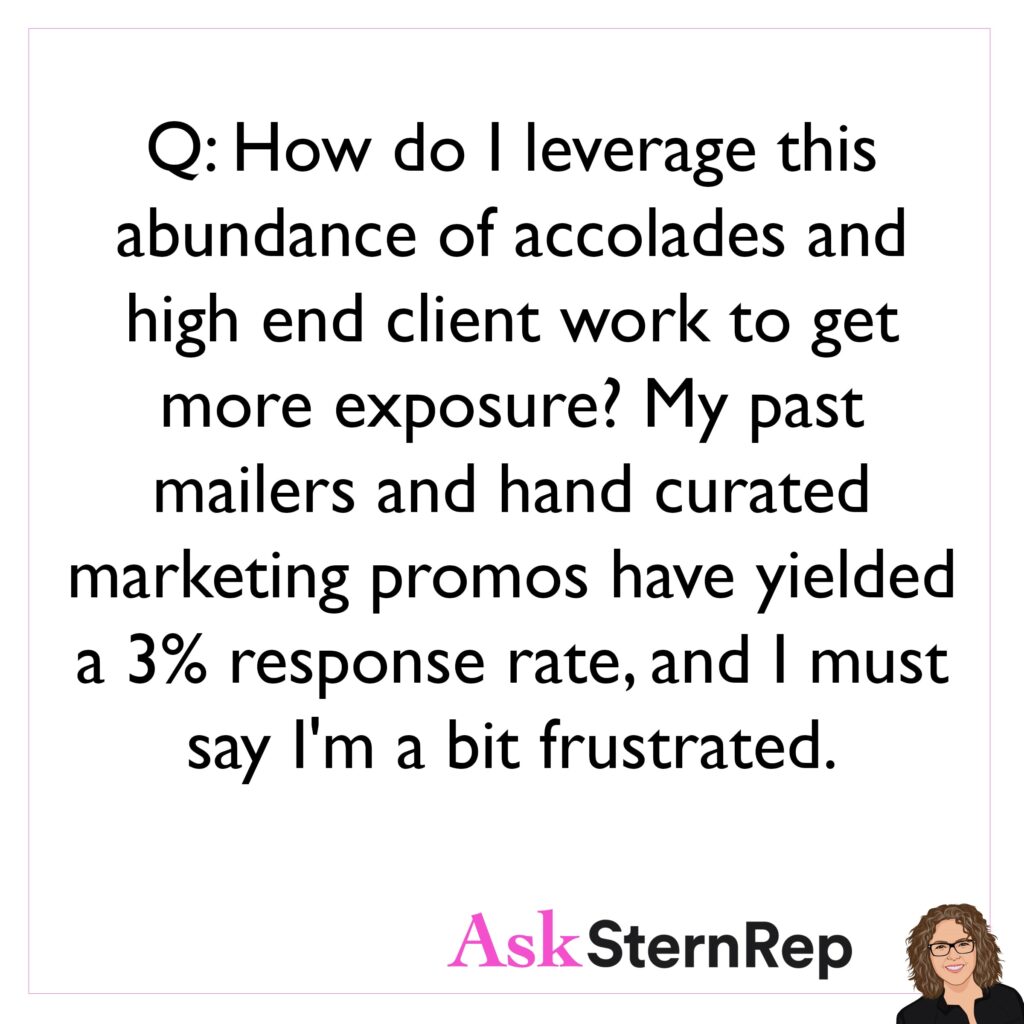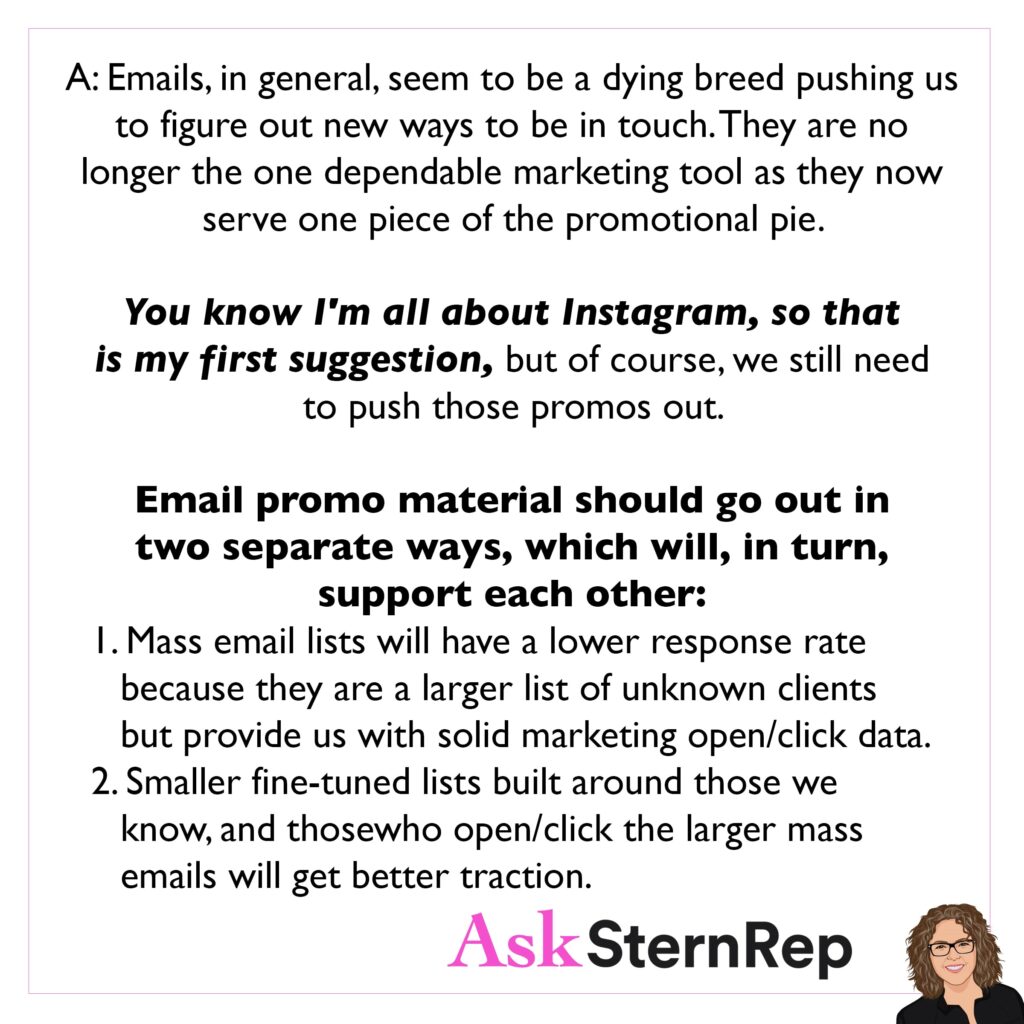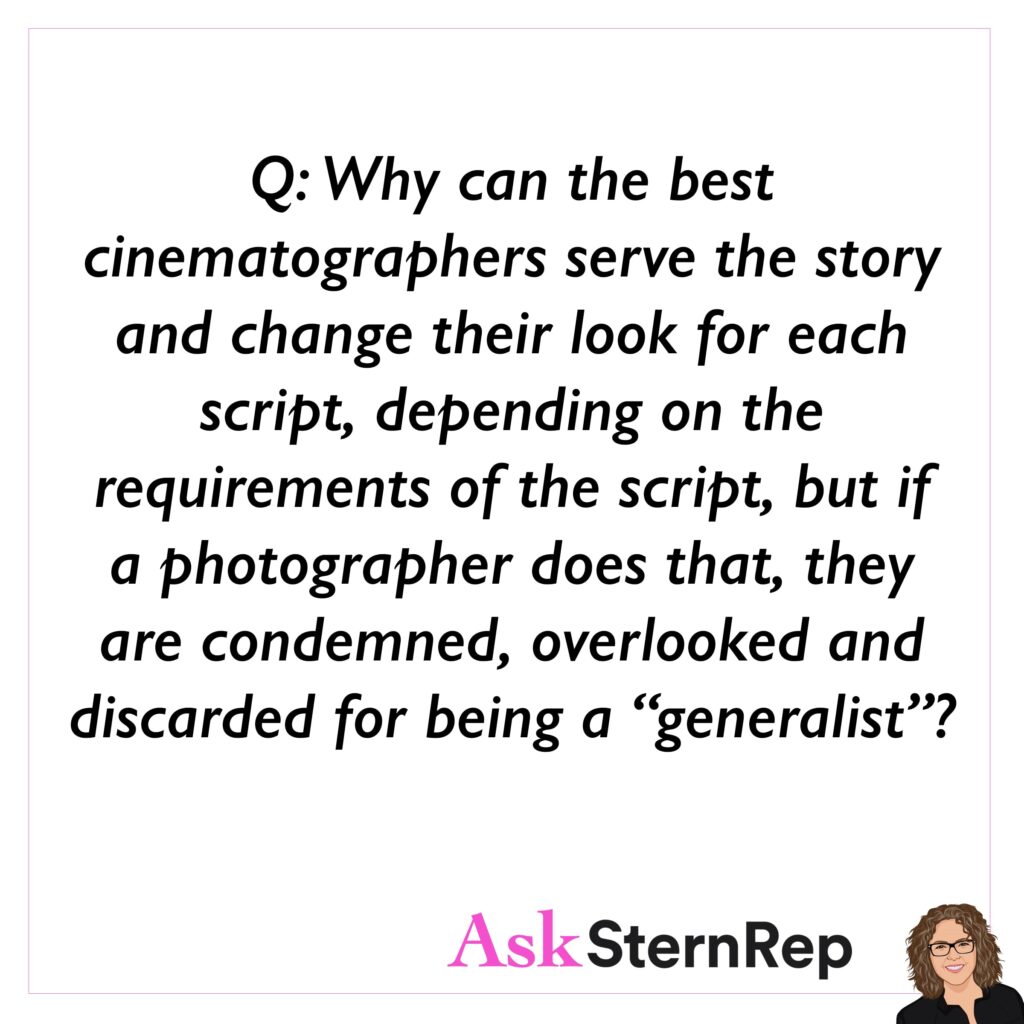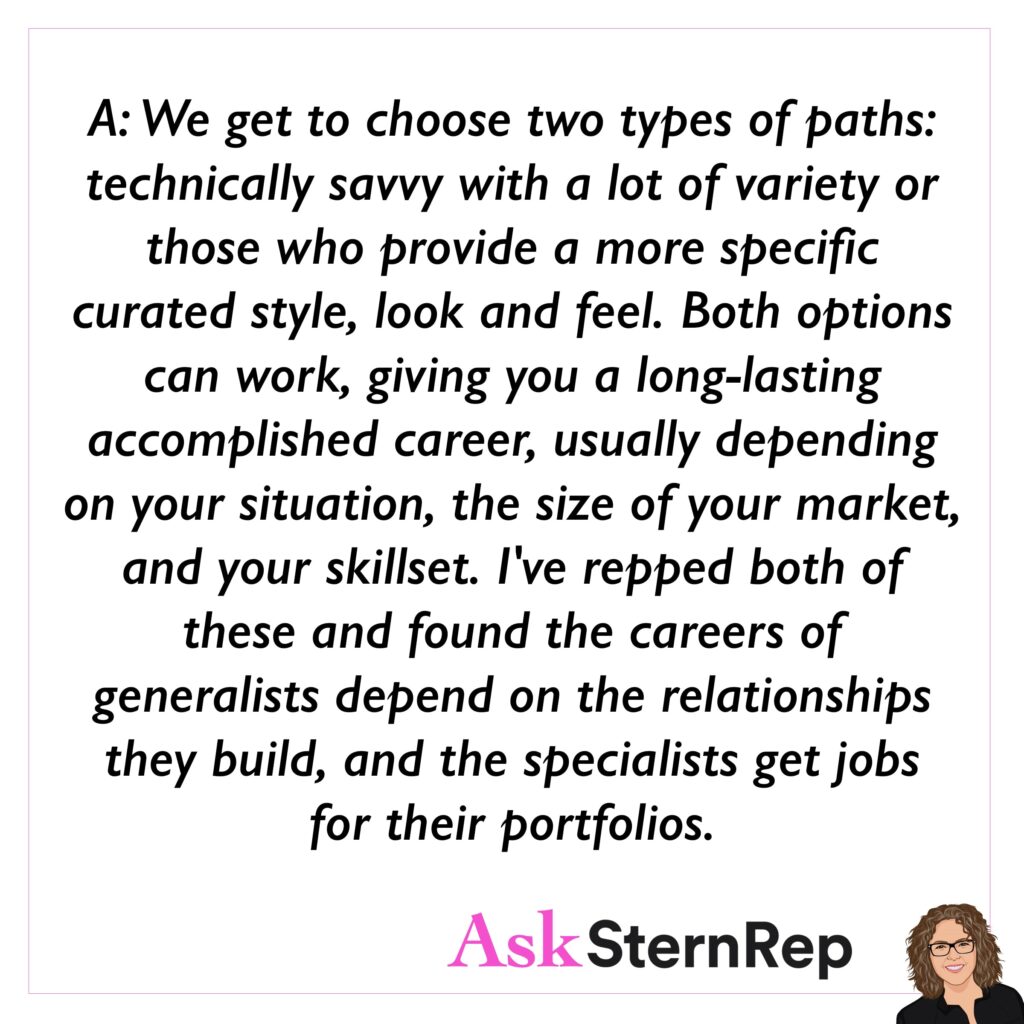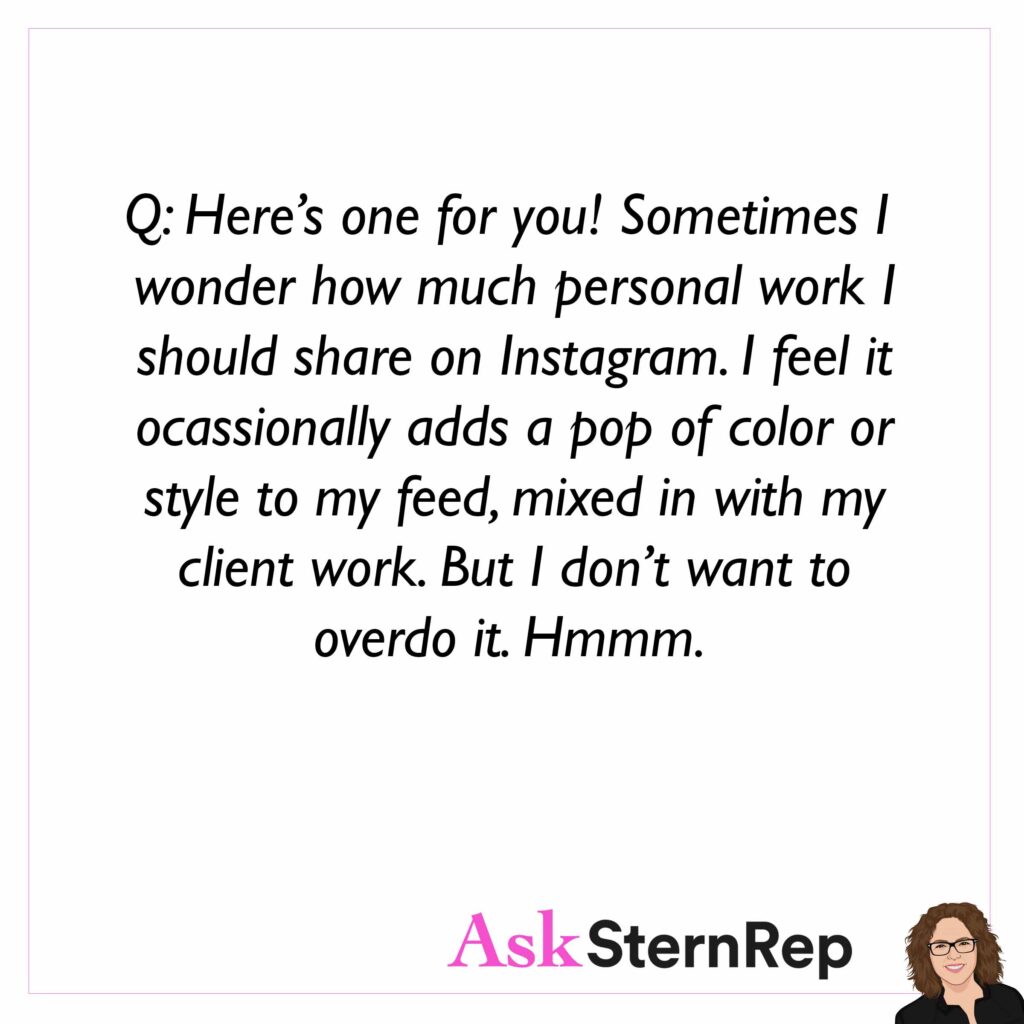
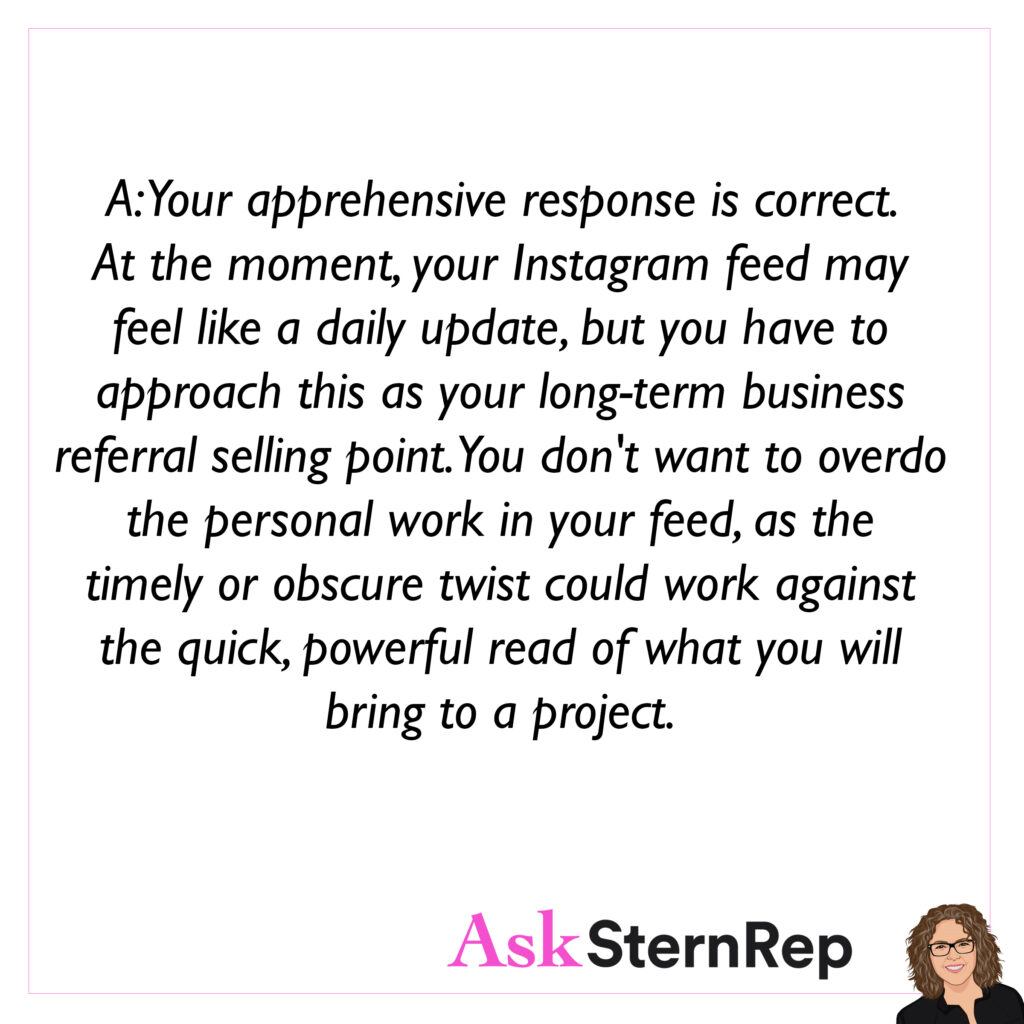
Q:
Here’s one for you! Sometimes I wonder how much personal work I should share on Instagram. I feel it occasionally adds a pop of color or style to my feed, mixed in with my client work. But I don’t want to overdo it. Hmmm.
A:
Your apprehensive response is correct. At the moment, your Instagram feed may feel like a daily update, but you have to approach this as your long-term business referral selling point. You don’t want to overdo the personal work in your feed, as the timely or obscure twist could work against the quick, powerful read of what you will bring to a project.

